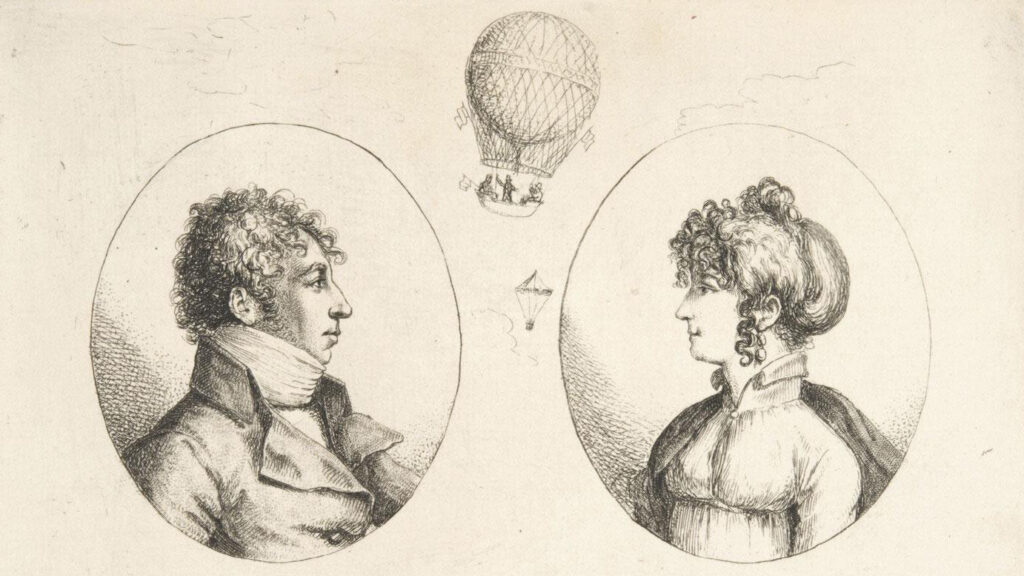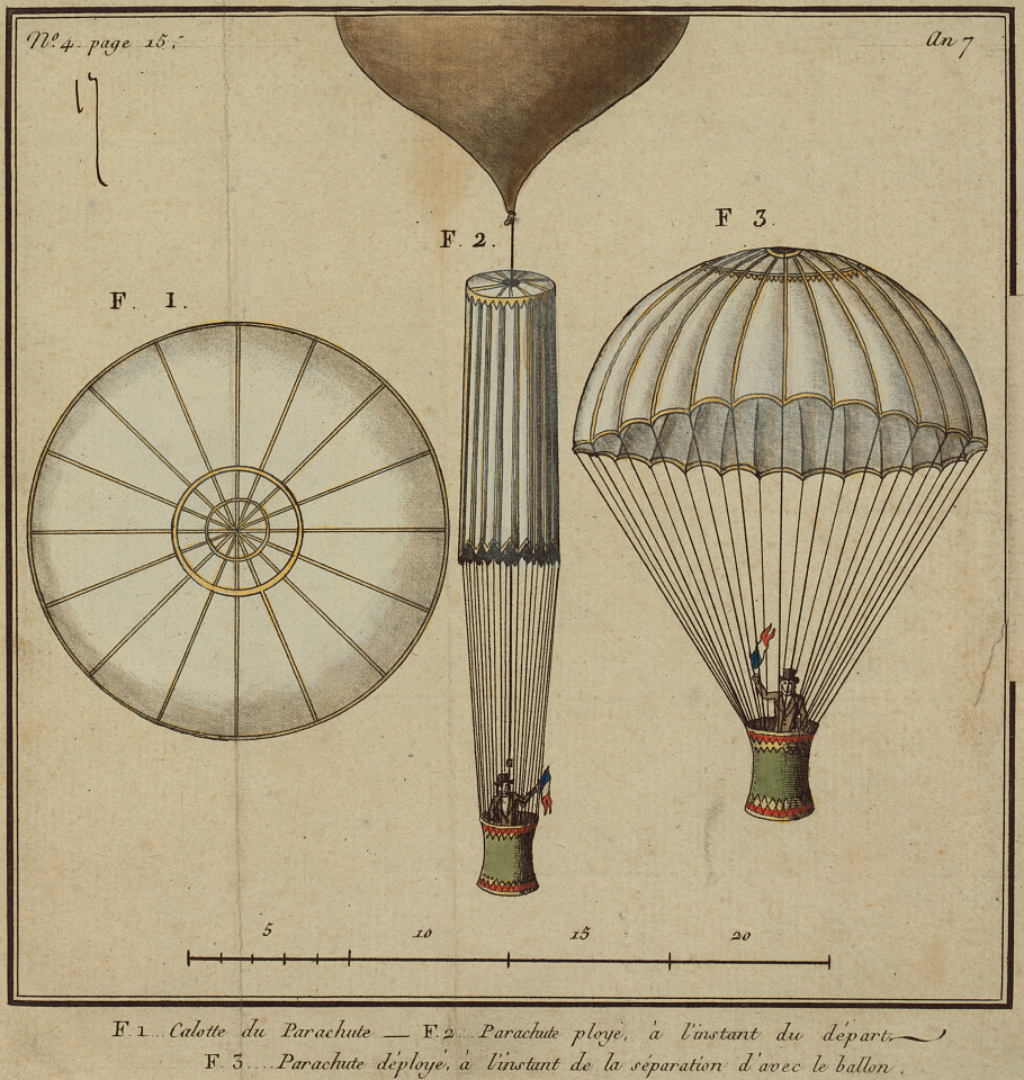 227 years ago, on 22nd October 1797, the French aviation pioneer, André-Jacques Garnerin, performed the first successful parachute descent, using the frameless parachute he invented.
227 years ago, on 22nd October 1797, the French aviation pioneer, André-Jacques Garnerin, performed the first successful parachute descent, using the frameless parachute he invented.
André-Jacques Garnerin was born on 30th January 1769, in Paris. Already in his youth, he showed interest in aerostats and became a student of Jacques Charles, the inventor of a gas balloon.
Garnerin´s numerous studies and experiments, performed together with his older brother, Jean- Baptiste Olivier Garnerin, were a significant contribution to ballooning. At the beginning of the French Revolution, and in recognition of his experiences and development, André-Jacques Garnerin was appointed the position of aérostier des fêtes publiques (English, literally: balloonist of public festivals, however often translated as ´Official Aeronaut of France´), a high official position at ministerial level. The French aviation pioneer served in this position until 1804, when he was succeeded by Sophie Blanchard (more information about the first French female balloonist in our article – 18 August 1805 – Sophie Blanchard becomes the first woman to fly solo in a balloon).
Apart from the hot air balloons, another topic of Garnerin´s interest was development of frameless parachute. At the beginning, he continued works of Louis-Sébastien Lenormand and his experiments with animals. In 1794, during the French Revolutionary Wars, Garnerin was captured prisoner of war and spent three years in prison in Buda (now part of Budapest, Hungary). Nevertheless, the time spent in captivity was not lost, because the French aviation pioneer used it for theoretical studies on ballooning and parachuting.
After his return from the captivity, on 22nd October 1797 – or on 1st Brumaire of the Year VI, according to the new Republican calendar – André-Jacques Garnerin performed the first successful descend with frameless parachute. The parachute had a diameter of approximately 7 metres and was lifted into the air with a balloon. The parachute canopy was closed during the ascend and Garnerin was standing in a basket attached to the bottom of the parachute.

At approximately 3,000 feet (1,000 m), the French aviation pioneer released the balloon and fell in his basket slowed down by parachute. The first phase of descend was smooth but shortly before reaching ground the basket began to swing violently. Garnerin´s landing was rough, however he survived uninjured.
The interesting fact is that Garnerin had also pioneering contribution for female involvement in aviation. In 1798, he shocked France with an announcement of performing a balloon flight with a young woman as his passenger. Although it was not the first female ascending in an aerostat (check our article from May of 2022 for more details – 20 May 1784 – first women to ascend in a tethered balloon), it was unpractised to announce that in advance. The flight became a subject of public discussion in France and had to be authorised by the Ministry of Interior and the Ministry of Police. Finally, it took place on 8th July 1798, with the female passenger known only as Citoyenne Henri (Citizen Henri).
One year later, on 12th October 1799, Garnerin´s student and future wife, Jeanne Geneviève Labrosse, became the first woman to parachute. In addition, his niece (daughter of the aforementioned brother Jean-Baptiste Olivier), Élisa Garnierin, was also an active balloonist and parachutists.
In 1802, Labrosse and Garnierin patented the pioneering life-saving device in aviation – a parachute intended to save the basket and its passengers in case of explosion of the gas balloon.
Over the next years, Garnerin continued his development of aerostats and parachutes. In 1803, he made the first long-distance flight in history, covering approximately 300 kilometres from Moscow to location described as Polova. In 1807, he broke his previous record, flying between Paris and Clausen, in Germany, and covering 395 kilometres.
André-Jacques Garnerin died on 18th August 1823, at the age of 54, while working on his new balloon. At the construction site, he was struck by a falling beam and died on the spot.

Cover photo: André-Jacques and Jeanne Geneviève Garnerin (Philadelphia Museum of Art, 1985-52-17560, Public Domain, cropped)



